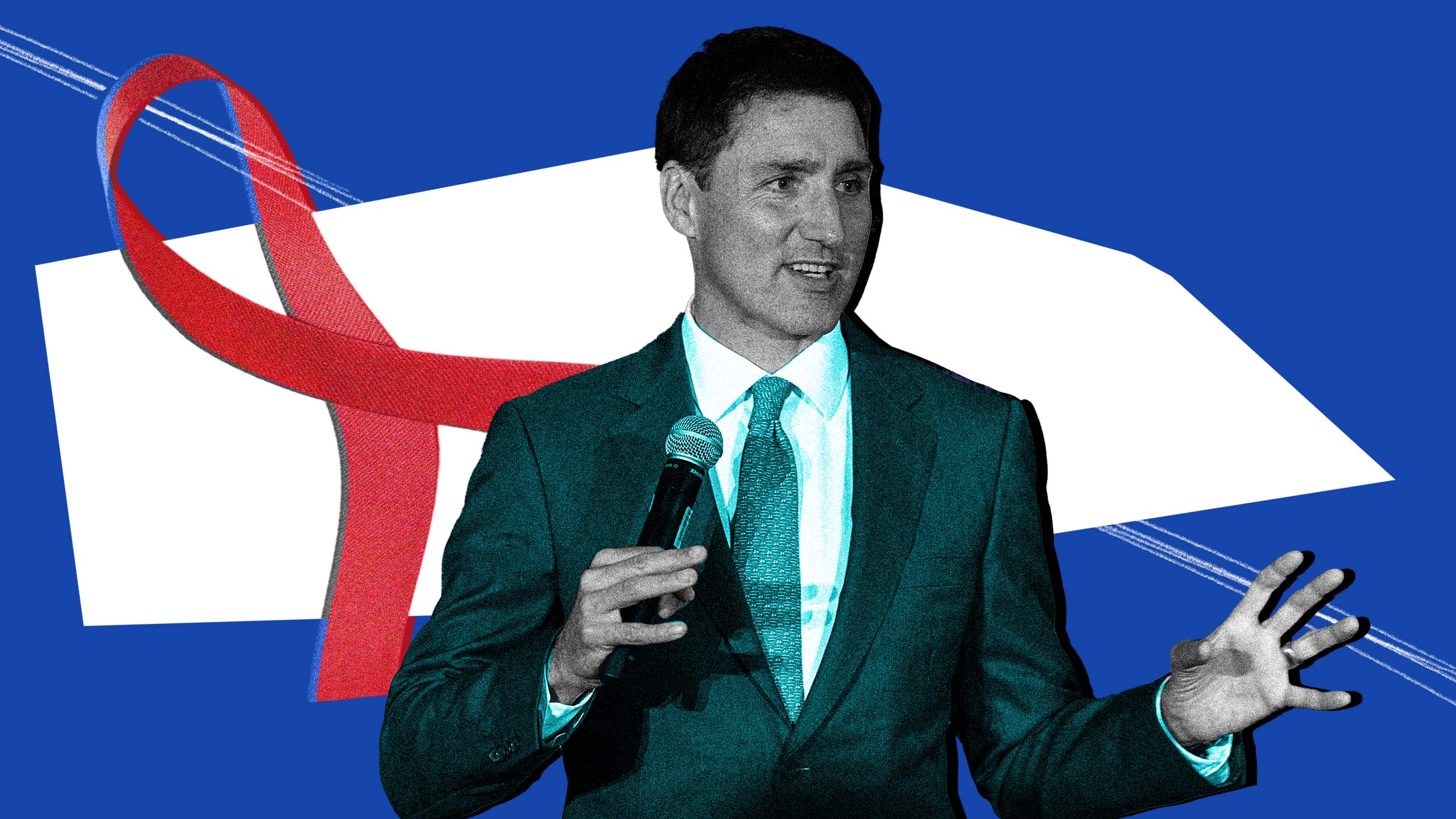In the wake of Montreal hosting the International AIDS Conference, questions are being asked about just how committed Canada is to tackling the issue at home. Funds have been frozen since 2008, and HIV infections have risen in Canada by 25 percent between 2014 and 2018, when they should be decreasing.
I reached out to Gary Lacasse, executive director of the Canadian AIDS Society, to get a sense of where things are at in Canada when it comes to funding and programming, and the news was, unfortunately, not encouraging.
“We haven’t had any increase in funding since 2008, specifically for HIV,” Lecasse says. “We’re still dumbfounded, after so many closures, after so many re-orientations of funds, that they haven’t tied into the experience that when you fund programs that are holistic, that take care of the whole of the problem and not just specific parts of it, you do see decreases in HIV cases as we were seeing continuously until [2014], when rates started going up.”
In 2019, the federal government aligned their programs to a prevention-only model under their pan-Canadian Sexually Transmitted and Blood-Borne Infection (STBBI) framework, but didn’t attach any new funding to that framework. The framework has a 2030 target of reducing infections at a time where some sexually -transmitted infections have been rising precipitously, notably syphilis, but also gonorrhea and chlamydia.
Lacasse says that the support mechanisms for people living with HIV were “annihilated” under the new framework, which has led to closures of a number of grassroots groups. While Lacasse says the focus on prevention and harm reduction are necessary, it should have been made on and above the existing programs rather than replacing them.
“When COVID hit, they asked us to do more work, and now with monkeypox, that’s an added workload for our organizations across Canada.”
“You can’t continuously put extra work on the pile of people who are already stretched to their limit,” Lacasse says.
Lacasse notes that the decrease in reported HIV cases over the past two years has been largely from a reduction in testing due to COVID.
“When COVID hit, they asked us to do more work, and now with monkeypox, that’s an added workload for our organizations across Canada,” Lacasse says, noting that this additional work is not being met with any additional resources from the federal government.
“We have to use our restrained funding from other sources to do work for the government, which is not recognized at the local level,” Lacasse says. “They’re nickel-and-diming the sector. There’s a lot of research that is pointless because we have the answers for many things like testing. We know how to get the testing there, and we are very good at doing that. We don’t need to have any more research on how to get the testing out when we have programs that they’re not even funding.”
I also asked Lacasse about the role of the provinces, because healthcare and public health are in their jurisdiction, and they have a demonstrated tendency to shift blame to the federal government for their own failures or for not funding programs. Lacasse notes that it varies from province to province—Ontario and B.C. are fairly well positioned, but even in B.C. they have seen their own closures of groups like Positive Living BC and the Pacific Women’s Network after their funding was cut.
“In Quebec, the funding is critically low,” Lacasse says. “Manitoba has some good funding, but it seems to be the same organizations that are there, but they are developing new programming. And in Saskatchewan, it’s like the Sahara Desert—there’s almost no funding.”
Lacasse also points out that Saskatchewan has one of the highest rates of HIV transmission in Canada, and that their morbidity rate is high.
While some, like Jody Jollimore, executive director of the Community-Based Research Centre in Vancouver, have called on the federal government to “compel” provinces to take actions like make PrEP more widely available for free, there really isn’t a mechanism by which they can accomplish this. It’s hard enough for the federal government to try and attach strings to future healthcare transfers so that they actually get spent on healthcare, and not to pad a province’s surplus (Alberta and New Brunswick) or to send out vote-buying cheques in advance of an election (Ontario and Quebec). There simply isn’t a lever for them to pull that could force the provinces to do anything about things like making PrEP available. In the feds’ attempt to get provinces on board with a national pharmacare program that could see PrEP and other medications be made readily available for free, thus far P.E.I. is the only province to agree.
Lacasse disputes the government’s claim that they are meeting their 90-90-90 United Nations targets (90 percent of people with HIV know their status; 90 percent of those diagnosed receiving antiretroviral treatment; 90 percent of those in treatment achieving viral suppression) by 2020, with the aim of eliminating HIV as a public health threat by 2030, saying that they aren’t even capturing the right data.
Canada’s funding for HIV lags behind other G7 countries, and calculations by HIV and AIDS groups around the country cite a figure of $123 million in funds that were promised and not delivered. In addition, the House of Commons’ health committee recommended in 2019 that funding be increased by $100 million per year to go toward the HIV response, and the government hasn’t acted on that either, in spite of the fact that they haven’t been shy about spending in other areas of public policy. This is funding that saves money in the long run, as each new HIV infection represents $1.3 million in direct and indirect costs over an individual’s lifetime.
“This government is all about the message—there’s no substance behind it,” Lacasse says. “There are empty dollars being announced, but they are never where they are supposed to go.”
Lacasse is right—this government likes to talk a good game, but have demonstrable problems in living up to their lofty rhetoric. The International AIDS Conference is a chance for them to show that they’re listening to these organizations, and for them to ensure that they are funded adequately to meet the challenge and actually live up to their targets. We’ll see if the political will is actually there to make it happen.


 Why you can trust Xtra
Why you can trust Xtra


